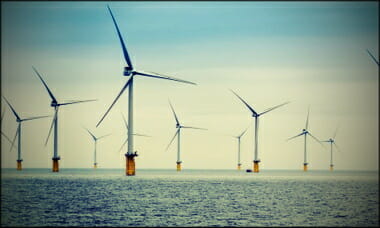
What’s Up With That notes the story from Germany:
Between January 9 and February 4 this year, 29 sperm whales got stranded and died on English, German and Dutch beaches. Environmentalists and the news media offered multiple explanations – except the most obvious and likely one: offshore wind farms.
Indeed, that area has the world’s biggest concentration of offshore wind turbines, and there is ample evidence that their acoustic pollution can interfere with whale communication and navigation.
However, Britain’s Guardian looked for answers everywhere but in the right place. That’s not surprising, as it tends to support wind energy no matter the cost to people or the environment. After consulting with a marine environmental group, the paper concluded: “The North Sea acts as a trap.… It’s virtually impossible for [whales] to find their way out through the narrow English Channel.”
No it’s not. These intelligent animals would naturally have found their way to and through the Channel by simply following the coast of England or continental Europe. But the author seems determined to pursue his “explanation,” even when it becomes increasingly illogical. “The [trapped] whales become dehydrated because they obtain their water from squid,” he argues, before acknowledging that “the dead Dutch and German animals were well-fed,” and that the North Sea’s squid population has increased in recent years.
The article discards Royal Navy sonar and explosives, because “big naval exercises in UK waters are unusual in midwinter.” Finally, the author concludes with this quote from his purported expert: “When there’s a mass stranding, it’s always wise to look at possible human effects. But, at the moment, I don’t see anything pointing in that direction.” He should look a bit harder. Not everyone is so blind.
Indeed, “researchers at the University of St. Andrews have found that the noise made by offshore wind farms can interfere with a whale’s sonar, and can in tragic cases see them driven onto beaches where they often die,” a UK Daily Mail article observed….
[….]
Modern 8-megawatt offshore turbines are 656 feet (200 meters) above the waves; their rotating blades sweep across a 538-foot (164-meter) diameter. Those enormous blades create powerful pulsating infrasound and exact a toll on many species of marine birds, and even on bats that are attracted to the turbines as far as 9 miles (14 km) offshore.
In a February 2005 letter, the Massachusetts Audubon Society estimated that the proposed Cape Cod wind project alone would kill up to 6,600 marine birds each year, including the roseate tern, which is on the endangered list.
Do we really want to add marine mammals to the slaughter of birds and bats, by expanding this intermittent, harmful, enormously expensive and heavily subsidized energy source in marine habitats?…
That was Germany… other stories popped up about Whales beaching themselves in Lincolnshire, England. According to the BBC, a fifth whale washed up on shore. So, I was curious about if there are wind farms nearby that would similarly affect these creature environmentalists seem to care so much about. This story from a 2013 Daily Mail article:
Here is a Getty Image from the farm:

An interesting Power Point slide show of these vibrations can be found HERE.
